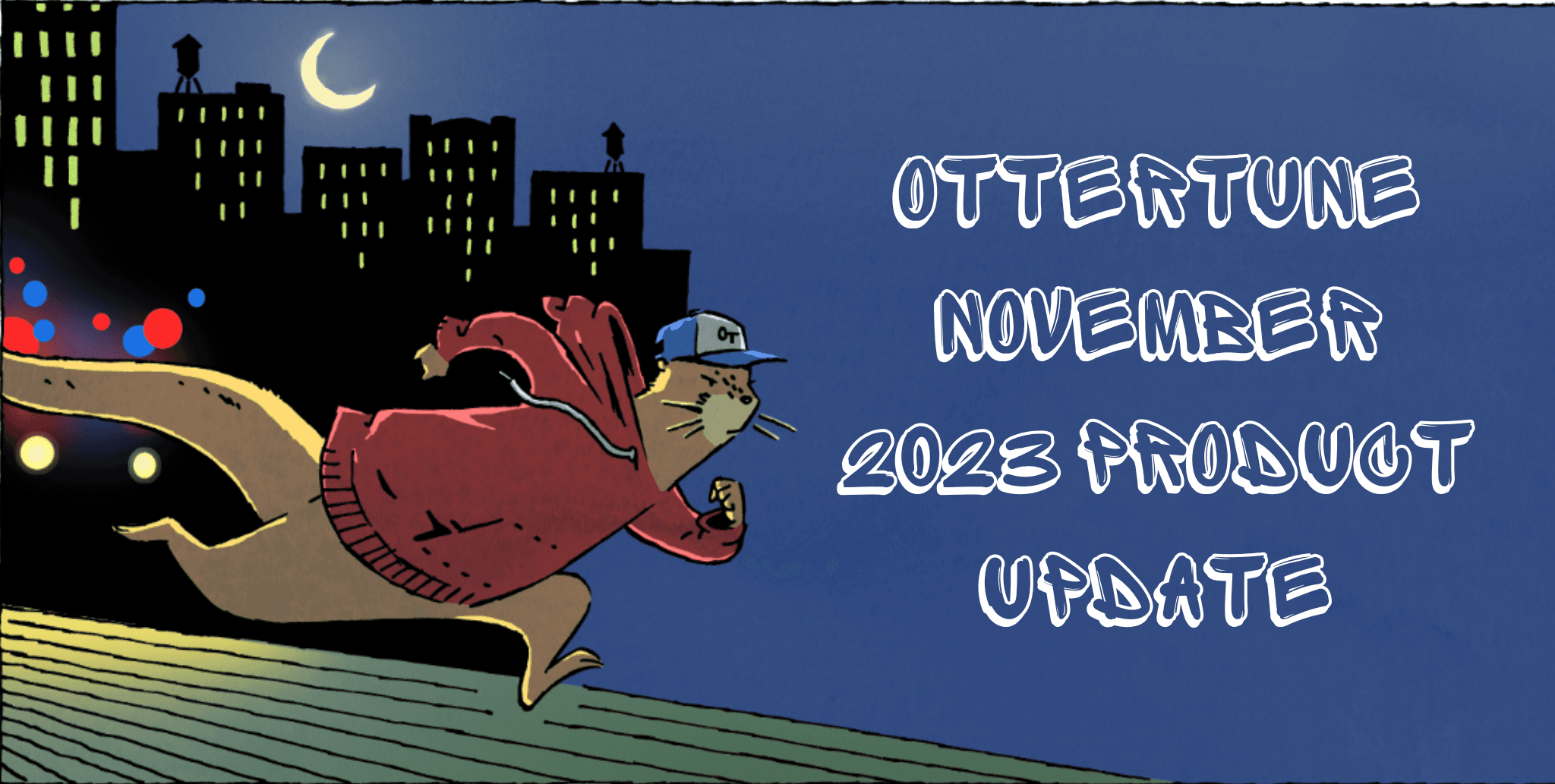May 12, 2021
Let's do this!
Andy Pavlo | Dana Van Aken
Yo. Today is a banner day that follows years of research on autonomous database technology and machine learning at Carnegie Mellon University (CMU) and lessons learned from customer deployments. We’re happy to announce the first commercial release of OtterTune software-as-a-service (SaaS) and seed funding From Accel. Our mission is to make databases run better, with less effort, and at a lower cost.
With hundreds of configuration settings (“knobs”), the work required to keep a database tuned, or more often, hundreds of databases, exceeds human abilities. Based on our research at CMU, we knew that, with the help of machine learning (ML), we could achieve better results with an automated tuning service that would learn from each database and become more efficient over time.
Here’s a little bit of our history to help you learn how we got here today and where we’re going next.
University research
OtterTune started in 2014 as a research project in CMU’s Computer Science Department led by OtterTune co-founders Andy Pavlo and Dana Van Aken. We were studying how to use ML to devise strategies to optimize DBMS knobs for any application automatically. We published the first academic paper on OtterTune at the SIGMOD conference in 2017 and presented it in Chicago.
With the development help of co-founder Bohan Zhang (first as a summer intern from PKU, then later a CMU MS student), we built the first versions of the OtterTune database tuning service, which uses ML to generate and install optimized DBMS configurations. OtterTune observes the DBMS’s workload through its metrics and then trains recommendation models that select better knob values. It then reuses these models to tune other DBMSs faster.
Our First Customers
The first real-world application of OtterTune in a production environment was at Société Générale (SG). SG approached us to conduct a field study involving their fleet of Postgres databases. The first thing we discovered was that they had an Oracle database that was more problematic, so that became our first project. At that time, OtterTune had been built to work with MySQL and PostgreSQL. But we extended it to support Oracle and discovered that our ML models worked on Oracle well enough–recommending a config that increased throughput by 45% and saved them the not-insignificant cost of several Oracle core licenses.
[Read the research paper we published with Société Générale]
We also worked with another customer and their large cluster of MySQL databases. OtterTune helped them reduce their CPU utilization and the number of running threads by more than 20%. At their scale, this reduction in utilization resulted in the ability to turn off multiple machines and save tons in server costs.
Besides refining our ML models with these experiences, we learned a lot about fitting in with database administration tasks and policies. This effort led to the development of new operational settings in the OtterTune service, which allow humans to control when and how frequently OtterTune runs, if and when it can restart databases with new configs, which knobs are off-limits and allowed value ranges.
A Group of Otters is Called a “Raft”
We are not doing this alone. Our raft is impressive. A few years ago, Amazon invited us to publish a blog post about OtterTune. That caught peoples’ attention, including early investors with valuable experience launching data management companies like Databricks, Snowflake, Cockroach Labs, SingleStore, Vertica, PingCap, and others. Eventually, we teamed up with Accel to fund the launch of OtterTune and our next phase of growth and development. Our friends at Accel (Ping Li and Daniel Levine) are guiding us through the early stages of our company and helping us realize our big ideas. Daniel notes that purple sea urchins are an invasive species that otters eat, and that helps keep kelp forests healthy. Needless to say, Accel gets otters.
Join us … the water is fine, and the fish are tasty
If you’ve got databases, we’ve got a way to keep them tuned and always optimized for you. We work with PostgreSQL, MySQL running in the cloud (Amazon RDS and Aurora), or self-managed instances. The more databases OtterTune works with, the smarter it gets, so check out our plans and pricing.
You’ll also probably also learn more than you ever wanted to know about otters. Spoiler: Otters are vicious animals.




